
 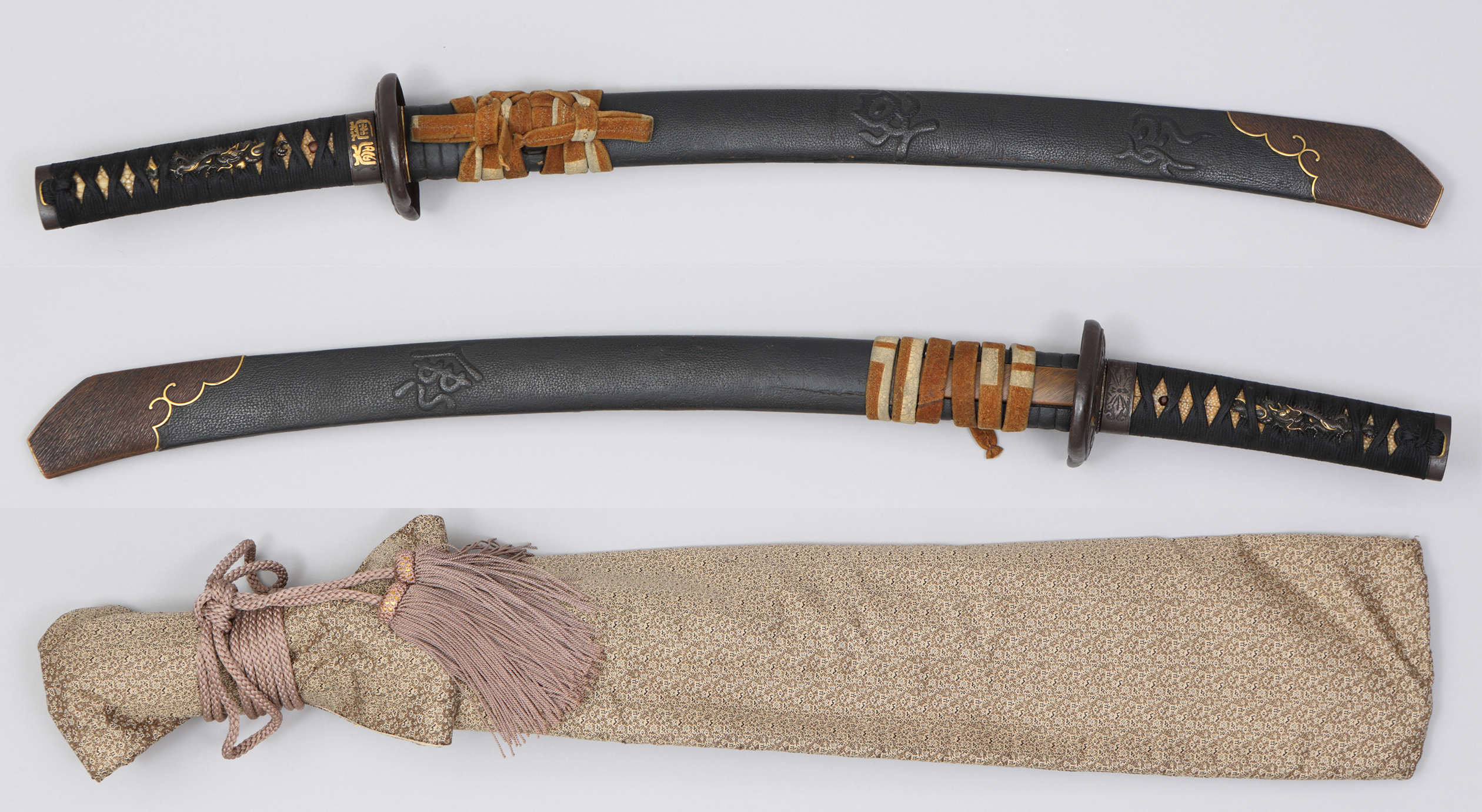 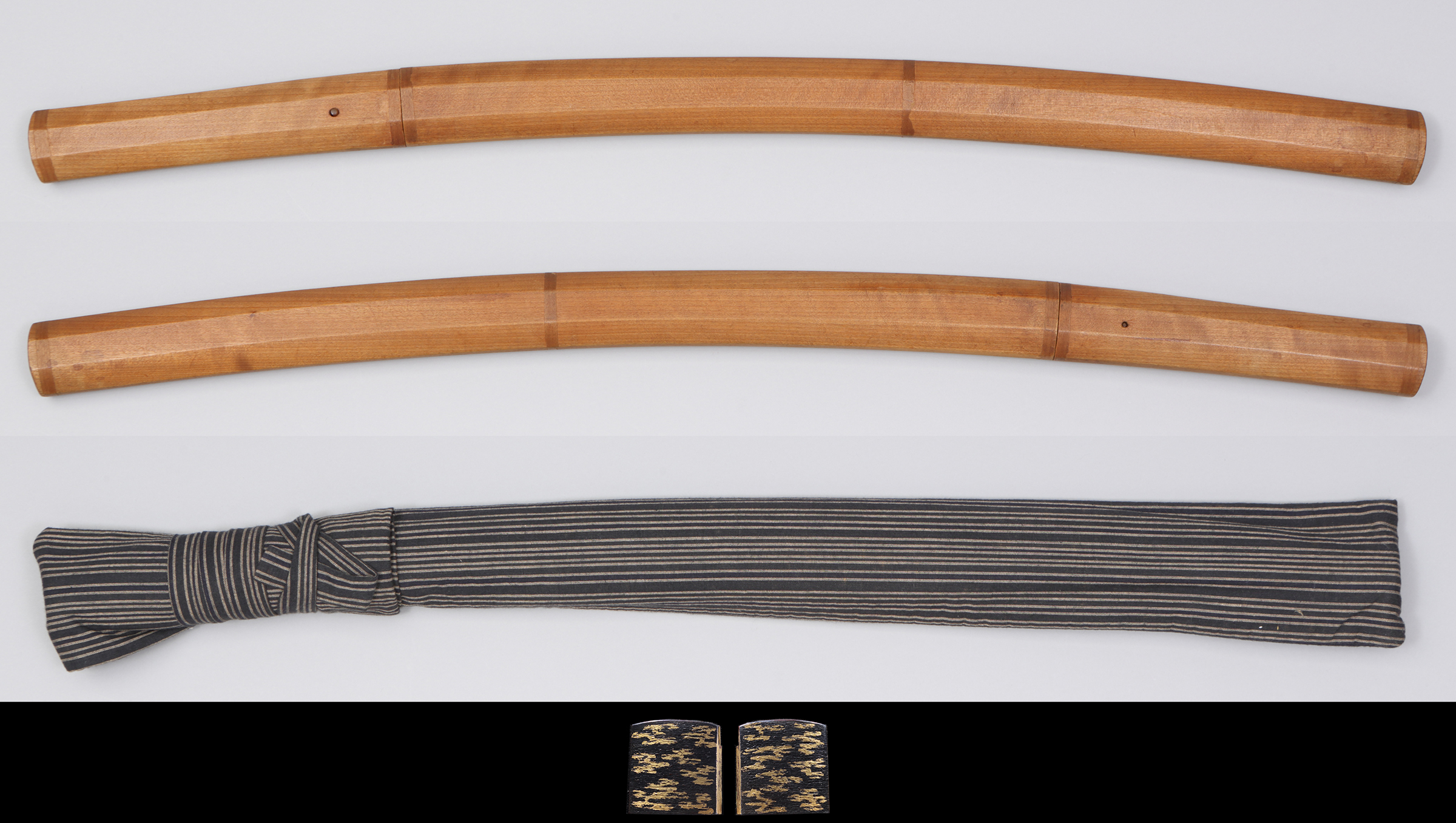 |
Wakizashi, Shirasaya, Koshirae |
Mumei, attributed to Shimada Hirosuke
|
[ Signature ] omote : no signature ura : - |
[ Size ] Blade length 53.1cm (1 shaku 7 sun 5 bu 2 rin), sori 1.3cm (4 bu 2 rin), moto-haba 3.48cm, moto-kasane 0.55cm, saki-haba 3.61 cm, saki-kasane 0.68 cm, mekugi-ana(holes) 2 out of 1 filled, blade weight 620.5g , shirasaya length 81cm, old shirasaya length 78.5cm, koshirae length 76cm |
[ Period ] Muromachi, second half of. Around Tenbun (1532-1555), Eiroku (1558-1570) |
[ Province ] Suruga |
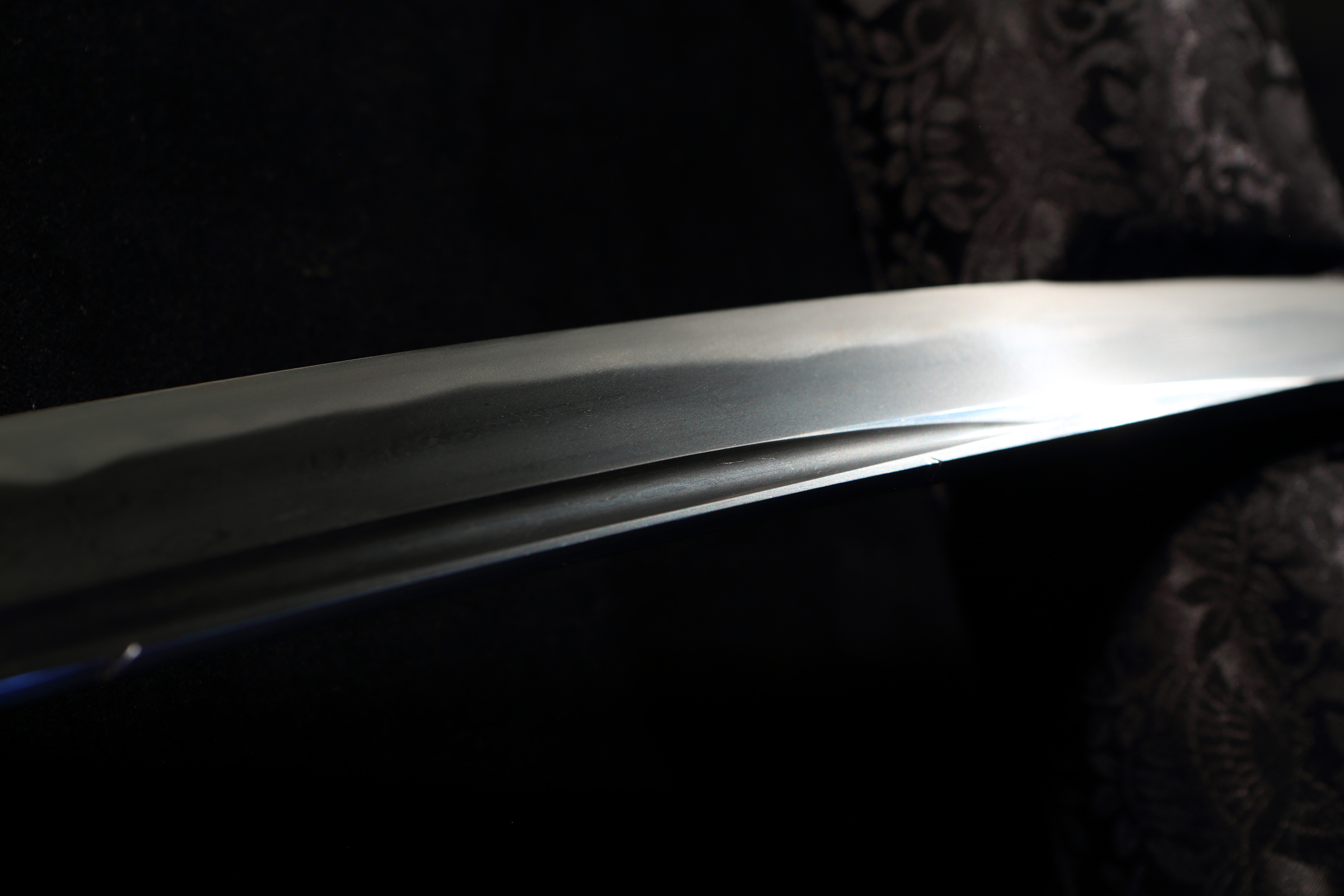 |
[ Feature ] Black wrinkled leather wrappings with scattered characters in a scabbard. There is no signature, [ Conditions ] The sword has multiple strike wounds on the ridge. Scratches on the sword's ridge have been regarded as 'honour scars' since ancient times, as remnants of brave warfare. |
[ Attachments ] Habaki ( single, shakudo-ji, gold iroe, single), shirasayas(old and new), bag of shirasaya, koshirae, bag of koshirae, NBTHK hozon paper "保存刀剣鑑定書"(issued on 9th Dec. Heisei 11(1999)) and NBTHK tokubetsu hozon paper "特別保存刀装鑑定書"(issued on 31st Dec. Heisei 26(2014)) |
 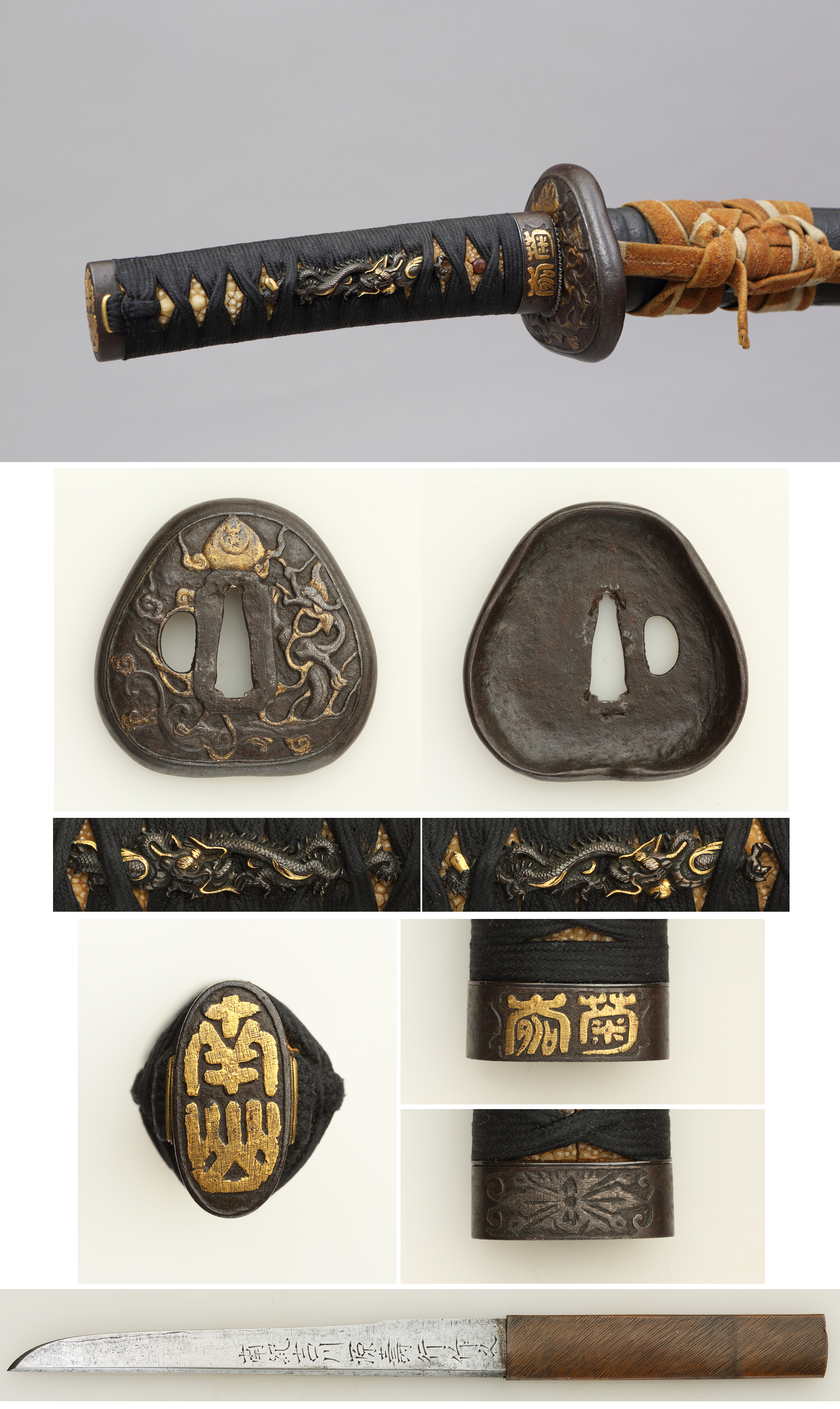 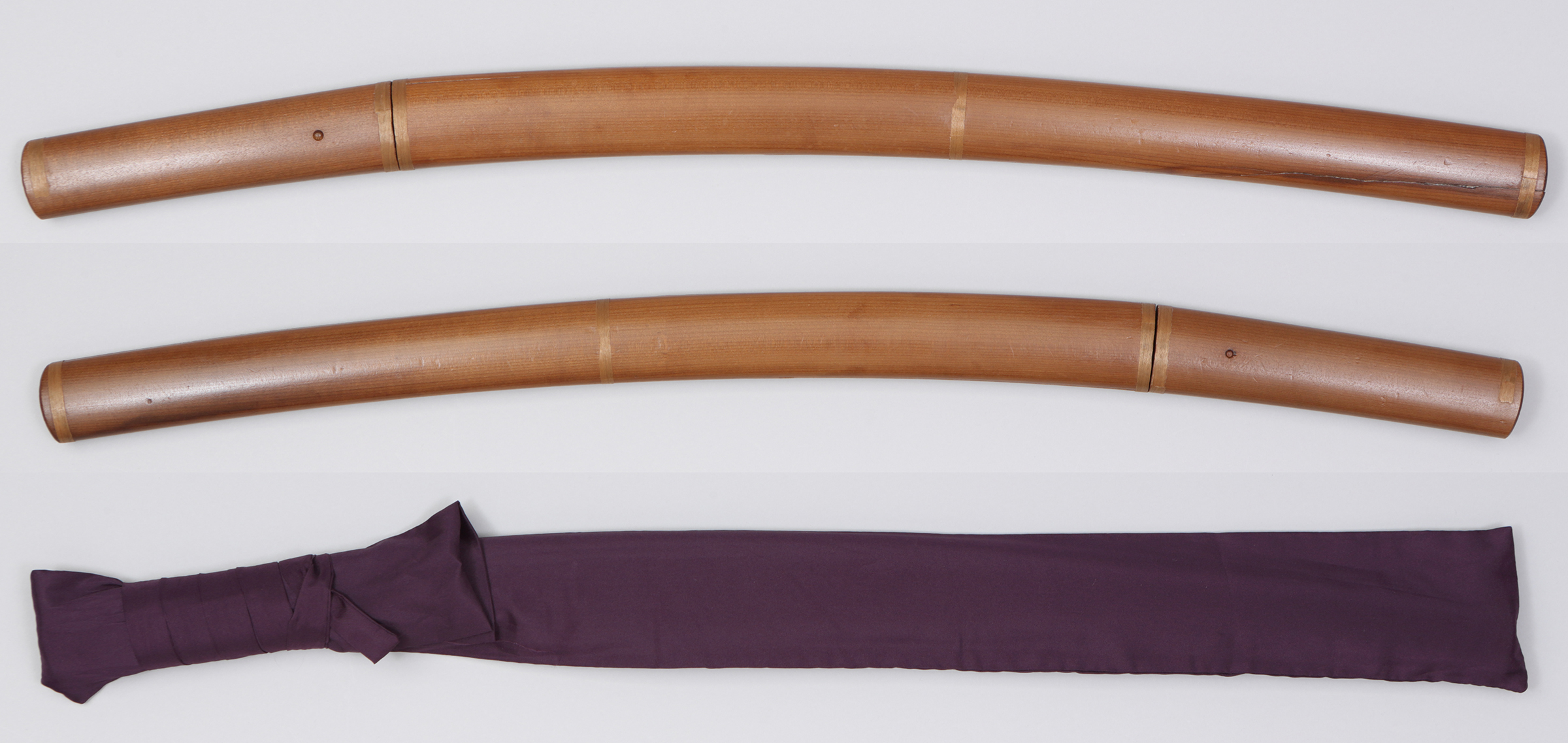 |
[ Item number ] A081223 [ Price ] SOLD |
Please order by E-mail.

About TOUKEN KOMACHI
BACK
TEL +81-(0)3-5284-9014/ FAX +81-(0)3-5284-9043____E-mail : s_tsukada@toukenkomachi.com
Copyright © 2009-2023 Touken komachi All rights reserved. |